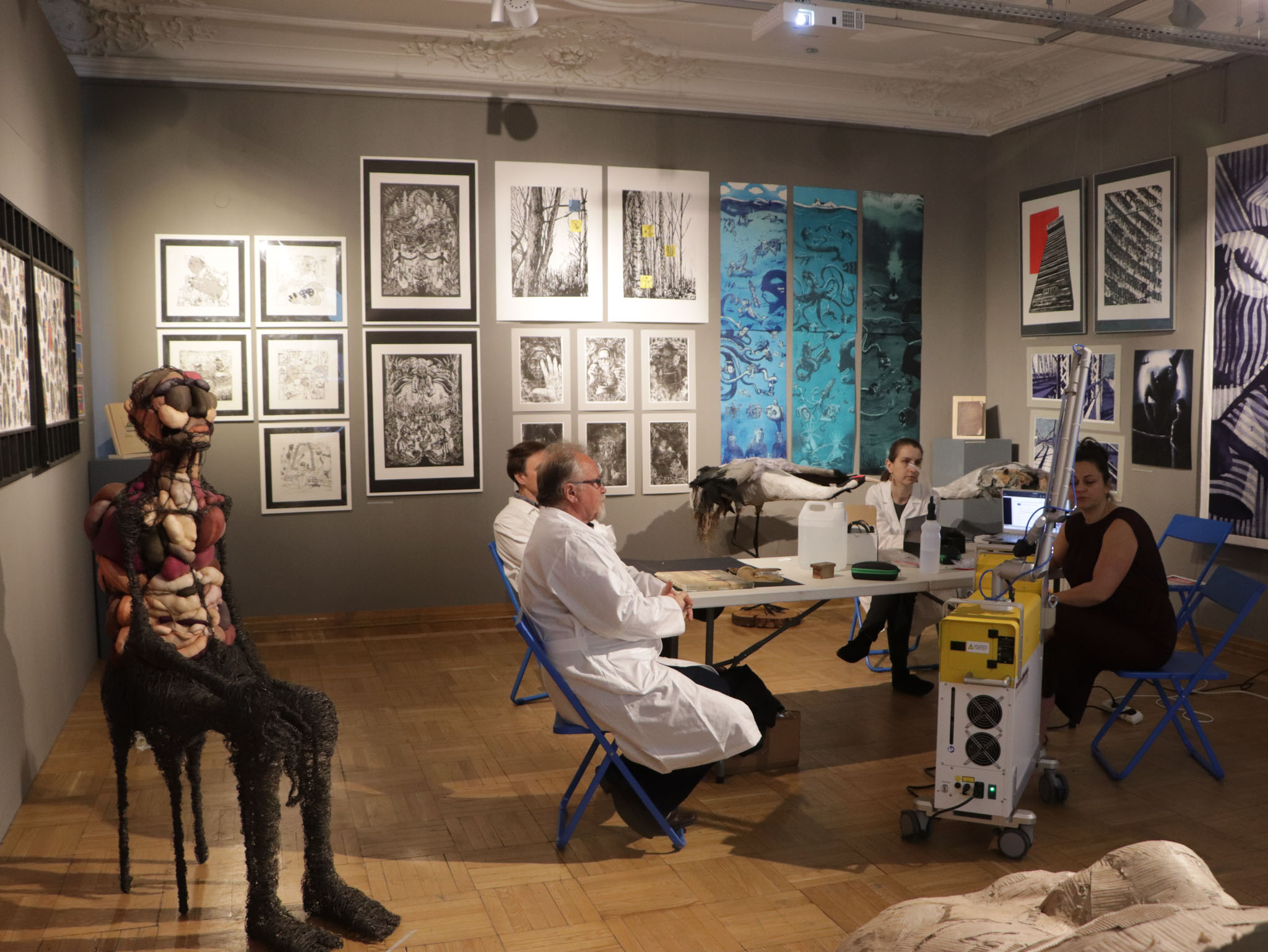The projects financed by the Interreg NEXT Poland – Ukraine 2021-2027 Programme have already started their implementation, and we eagerly await their upcoming results.
However, we do not forget about the results and benefits brought by projects from the 2014-2020 Programme edition. We continue to show their achievements and hope that stories of people behind them or benefitting
on them will be inspiring for forthcoming initiatives in the whole Programme area.
We invite you to read!
18 square metres. On such a patch more than 30 years ago, Jerzy Ostapczuk began his conservation work
at the Museum Podlaskie in Białystok.
And that’s all for starters. The conservation equipment had yet to be completed.
Today, in Choroszcz near Białystok, they have 300 square metres and equipment that is among the most modern in Poland. Jerzy shows you around the successive studios: gilding, wood conservation, fabric, leather, paper, ceramics, metal, enjoying himself like a child. He mentions the mysterious names of successive devices and tools in one breath.
What does he enjoy the most?
A magic wand? No – a cross-border project, hard work and support from the European Union.
But the beginnings were not easy and the time pressure was high. They looked for a partner in Ukraine – it didn’t work out, they found one in Belarus – the Hrodna State Museum of History and Archaeology. They planned mirror activities – the same equipment, the same studios, the same specialists, although the experience was different.
Shortly afterwards, a pandemic and then events across the eastern border interrupted the cooperation,
and the museum workers from Podlasie had to complete the project on their own.
Marek Skrypko, coordinator of the CONSART project, believes that it was worth the challenge and is now proud
of the result. The once abandoned, overgrown warehouse building is now a modern Regional Centre for Research and Conservation of Artefacts:
The moment of the opening of the facility was strongly experienced by Dr Waldemar Wilczewski,
Director of the Museum Podlaskie:
The Centre can now carry out research, training and consultancy in the field of protection and conservation
of monuments. The museum has also bought a special car for transporting valuable and fragile artefacts.
Thanks to a project implemented as part of the Cross-Border Cooperation Programme Poland-(Belarus)-Ukraine 2014-2020, a publicly accessible database has also been created where the effects of conservation work can
be viewed. It can be used by researchers, students, but also simply by the region’s inhabitants and tourists.
The impressive results of the conservators’ work can also be seen by visitors and tourists at museum exhibitions.
And now Mr Jerzy has only one worry – the lack of people willing to work as conservators. There are few who want to spend painstaking hours restoring antiques. However, he believes that such modern studios as they have managed to create through the project will attract talented and patient art-loving craftsmen.
More information on the CONSART project can be found here.
